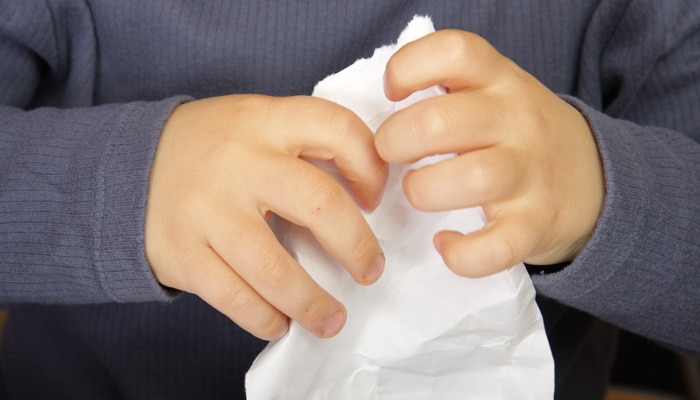While we believe that the books and resources recommended may be of value to you, keep in mind that these are suggestions only and you must do your own due diligence to determine whether the materials are appropriate and suitable for your use. PNC has no sponsorship or endorsement agreement with the authors or publishers of the materials listed.
RECYCLING

Let’s Make Paper
Children will make paper from recyclable material.

Lesson Objective
Children will create paper from recyclable materials and observe that materials can be reused to create something new.
ScienceArt
What You'll Need
- Blender
- Deep 9” x 13” disposable foil baking pans – 4
- Piece of small-holed window screen 8” x 10”
- Rolling pin
- Liquid laundry starch – 1 bottle
- Large slotted spoon
- Junk mail or newspaper
- Paper towels
- Wax paper
What To Do
Note: The paper may take several days to dry completely.
- Have the children tear up the paper into small pieces (approximately 1 inch) and place them in the foil pans. Soak the pieces of paper in very warm water mixed with laundry starch (1 tablespoon of starch per cup of water) while you prepare the next step of the activity.
- Place the soaked paper in a blender with enough water and starch mixture to cover it completely. You may need to do this in several batches (if a blender is unavailable, see Lesson Tips).
- Blend the paper scraps and water until all large chunks are pulverized (about 30 seconds to 1 minute). The longer you blend the pulp, the smoother and more even your paper will be.
- Place several layers of paper towels on the table.
- Put the screen on top of the paper towels.
- Using the spoon, spread some pulp in an even layer over the surface of the screen.
- Use the rolling pin to press down hard on the pulp to squeeze out any excess water.
- Lift the screen off the paper towels and turn it over onto a piece of wax paper.
- Remove the screen and let the paper dry.
- When the paper is dry, gently peel it away from the wax paper and it will be ready to use.
Resources
Home School Resources
Home educators: use these printable lesson PDFs to teach this lesson to your home schoolers. They're available in English and Spanish.
Content Provided By
Common Core State Standards Initiative – These lessons are aligned with the Common Core State Standards ("CCSS"). The CCSS provide a consistent, clear understanding of the concepts and skills children are expected to learn and guide teachers to provide their students with opportunities to gain these important skills and foundational knowledge [1]. Visit the CCSS


